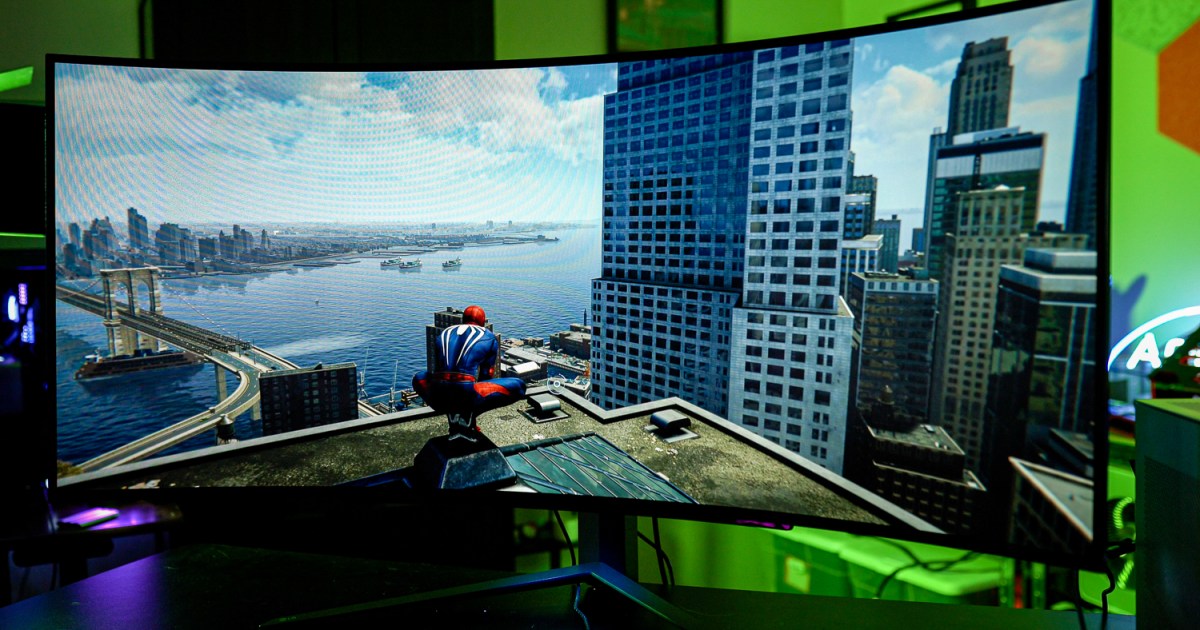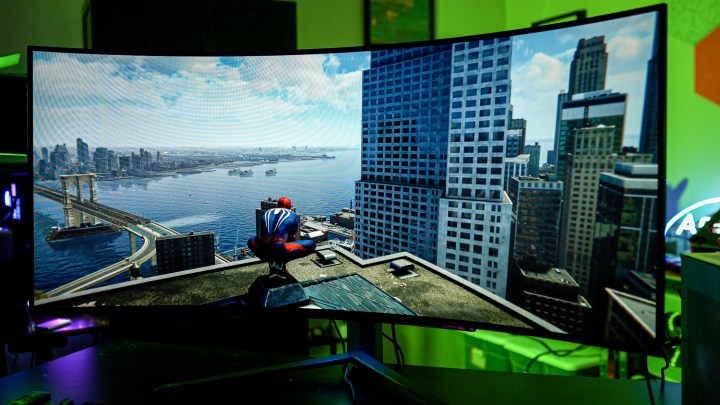
The debate between a dual-monitor setup and ultrawide is one for the ages (or, at least, the last decade), but I firmly fall into the ultrawide camp. That’s why it surprised me to see my colleague Jon Martindale sing the praises of a dual-monitor setup over an ultrawide. I have to push back.
Martindale makes some valid points, from the cost of ultrawide monitors to the pixel density of such a large display. But, for the way I use my monitor, I couldn’t imagine using anything else. Here’s why.
Perfectly immersive
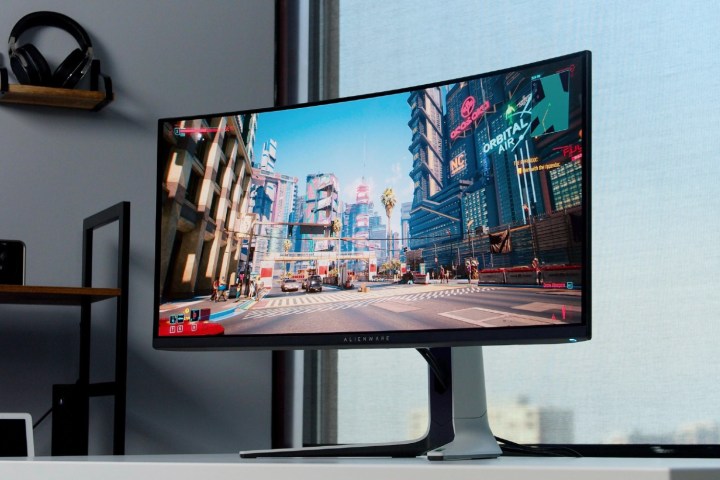
I’ve used ultrawide monitors for close to a decade (hard to say exactly when; the years start blurring together at one point or another). I started with an atrocious LG 29-inch ultrawide display, moved up to the Massdrop Vast, and now I have one of the best gaming monitors you can buy, the Alienware 34 QD-OLED. Not everyone is in the market to spend $1,000 on a monitor, but I’ve stuck with ultrawide monitors since the first one I bought for $200 for the same reason — they’re immersive.
That’s one of those words that gets thrown around so often that it’s almost lost all its meaning, but the 21:9 aspect ratio truly sucks you into games. It’s informed by how often we see regular 16:9 displays, especially for gaming. When you boot up something on an ultrawide monitor, there’s a subconscious sense that you’re seeing part of an image that most other people aren’t. You are literally seeing more of the game world, not just the same world on a larger screen.

There are some games where that makes a big difference for immersion. For instance, Ratchet & Clank Rift Apart on PC has a circular blur that runs on the outside of the screen, but you’d never really see it on a 16:9 monitor. As you run past characters on an ultrawide display, they slowly blur on the edge of the frame before zipping past you, making you feel like you’re moving through a 3D space, not just moving a character on a 2D screen.
And there’s nothing better than using an ultrawide for strategy games. From Civilization VI to Cities Skylines to Stellaris, seeing more of the playing space at one time is huge for making decisions. With only a few rare exceptions — like some indies that stretch to 21:9 rather than natively supporting the aspect ratio — the vast majority of games I play look better on an ultrawide than they do on a 16:9 monitor.
Great for work
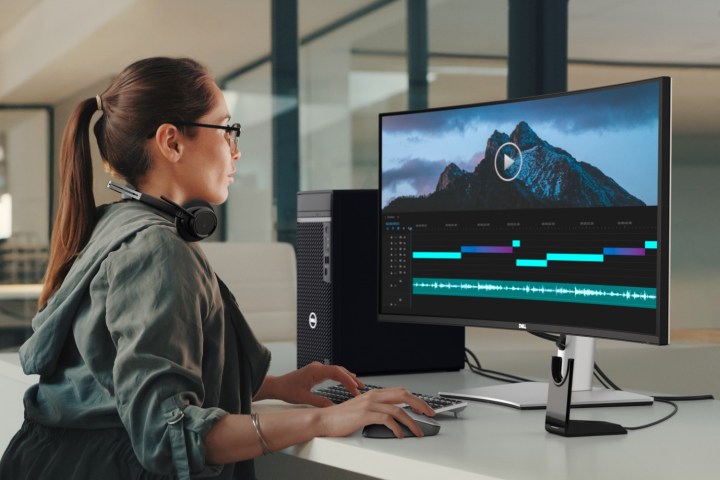
You probably need a monitor for more than just playing games, and once again, ultrawide displays make productivity a breeze. You don’t get the full screen space of having two 16:9 monitors (unless you go with something like the Samsung Odyssey Neo G9), but you still get a lot more room.
The main reason I use an ultrawide for work is that I can pull up two windows side by side. In my work, this involves a story I’m working on and a browser window for research, but there are a ton of other use cases. Pull up a YouTube video or Netflix show while you’re shopping; have Spotify open while running through spreadsheets; or sneak in a Discord chat while you’re replying to emails.
And when you need to go fullscreen, ultrawide monitors are great for that. From Pro Tools to Adobe Premiere Pro, seeing more of your workspace window can make a huge difference, rather than trying to cram everything on a single screen. If you’re a creative professional, an ultrawide monitor is a must.
No headaches
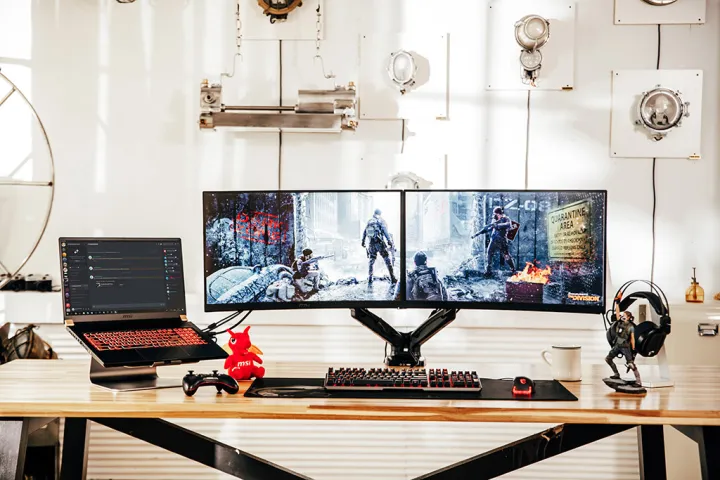
If you haven’t used a multi-monitor setup, you’re in for a lot of hassle. There are a ton of multi-monitor problems, from screens randomly going black to mismatched refresh rates to games and apps launching on the wrong screen. It can be a mess.
A single monitor solves those issues, and an ultrawide gives you more room to work without the headaches that can come up with multiple monitors. It makes your entire setup much easier to cable manage, too, especially if you have a particularly long desk like I do.
Ultrawides aren’t right for everyone, especially if need multiple full-screen apps up at once. But, if you’re looking for a single Swiss Army Knife of a display that can game as well as it can work, jumping to 21:9 might be for you.
Editors’ Recommendations
